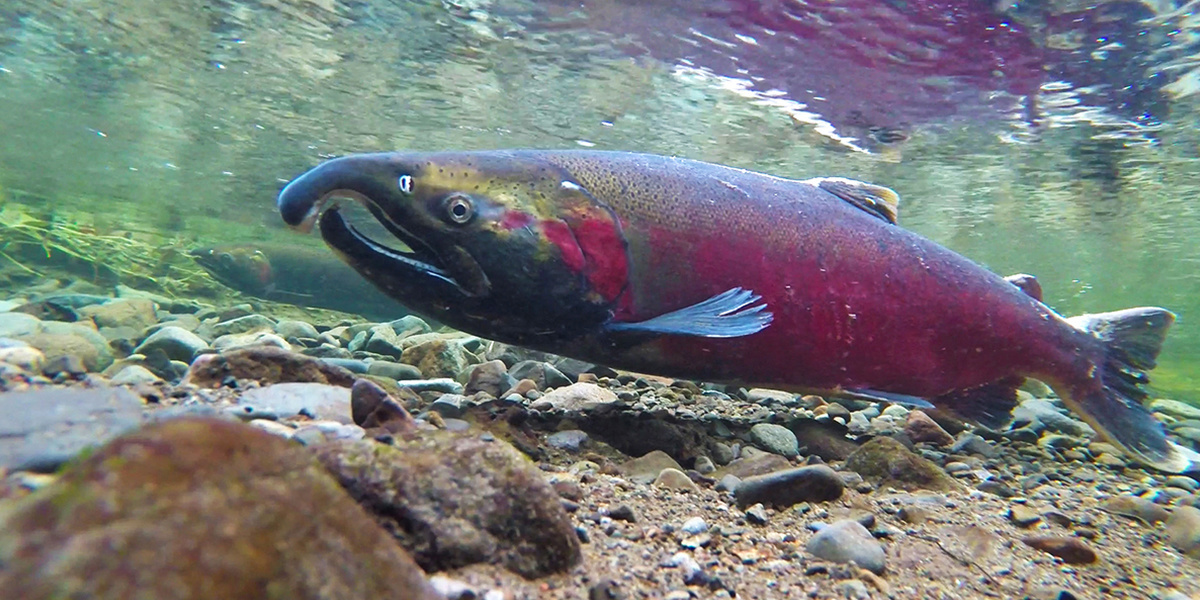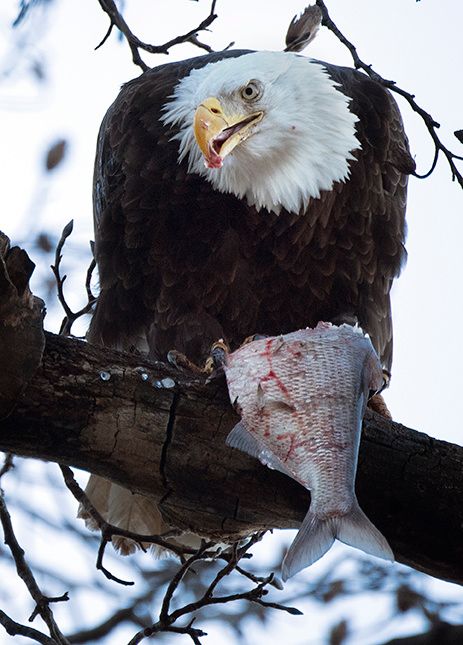
New Farm Bill Contains Sneak Attack on the Environment With Toxic Pesticides

By Derrick Z. Jackson
If fish could wail, they would scream over the lethal powers granted to the U.S. Environmental Protection Agency (EPA) in part of the draft farm bill recently rolled out by the House Agriculture Committee. The bill, passed out of committee by Chairman Mike Conaway (R-TX) on a party-line vote last month, desperately fails farmers and low-income families. It also contains a number of sneak attacks on the environment. One such provision would allow the EPA to approve new pesticides with no assessment of their potential impact on fish and wildlife covered under the Endangered Species Act.
That means that EPA would no longer need to wait for independent research on the toxicity of pesticides in rivers, wetlands and prairies from the U.S. Fish and Wildlife Service in the Interior Department, or in estuaries and coastal waters from the National Marine Fisheries Service in the Commerce Department. The bill chillingly specifies that the EPA administrator “shall not be required to consult or communicate with the Secretary of the Interior or the Secretary of Commerce.”
Bald eagles, such as this one in the Umbagog National Wildlife Refuge in New Hampshire and Maine, were driven to near extinction in the contiguous 48 states by pesticides. Derrick Z. Jackson
To date, most of the national publicity about the House farm bill has understandably focused on its potentially devastating effect on America’s poor, with expanded work requirements that the Congressional Budget Office estimates would eliminate 1.2 million people from the Supplemental Nutrition Assistance Program rolls. The CBO also estimates that 400,000 households would lose benefits under higher income thresholds, eliminating free school lunch for 265,000 children. The bill also slashes child support and home heating and cooling assistance.
When it comes to wildlife, the bill envisions an EPA that pays no heed to environmental science, potentially wreaking a different kind of devastation.
Chlorpyrifos Clearance Only the Beginning
This continues the attack on federal environmental science that began in earnest a year ago when EPA Administrator Scott Pruitt derailed a ban on chlorpyrifos that was long in the works during the Obama administration. In 2000, the EPA ended that neurotoxin’s use in residential lawn and garden and indoor pest control for its toxicity to children. However, it remained America’s most-used conventional insecticide in commercial agriculture, used so heavily that the Obama-era EPA could not conclude that human exposure in residues and water runoffs met federal safety standards. One study last year found that 7-year-old children in Salinas Valley, California who lived near farms using organophosphates such as chlorpyrifos, diazinon and malathion suffered deficits in intelligence and verbal comprehension.
But Pruitt cleared chlorpyrifos after meeting with the CEO of Dow Chemical, the top maker of the pesticide. The Los Angeles Times exposed the meeting after an EPA spokesman lied that it never happened.
Emboldened by that success, Dow, which donated $1 million to President Trump‘s inaugural committee and spent nearly $14 million on lobbying in 2016, pursued a far more outrageous free pass for its toxic products. It feared the results of a massive National Marine Fisheries Management study launched by the Obama administration that was not yet final, but that would likely render a very negative biological opinion on the effect of chlorpyrifos, diazinon and malathion on fish and wildlife. As reported by the Associated Press, Dow’s Washington law firm wrote Pruitt, Interior Secretary Ryan Zinke and Commerce Secretary Wilbur Ross, urging them to dismiss any results that would come of that research, complaining that the methodology wrongly produced “unrealistically high and sometimes physically impossible estimates.”
A Fleeting Victory for Science
For a hopeful second, it appeared that Dow had lost the argument when the fisheries service officially concluded that chlorpyrifos and malathion were each likely to directly “jeopardize” 38 species of sea life, including several species of salmon, sturgeon and killer whales, and diazinon would jeopardize 25 species. The pesticides would also “adversely” harm about the same number of critical habitats. The opinion emphasized: “Species and their prey residing in shallow aquatic habitats proximal to pesticide use sites are expected to be the most at risk.”
But Conaway (who has received nearly $5 million in campaign contributions from the agribusiness sector since 2005, according to the Center for Responsive Politics) and his fellow republicans want to come to the rescue of Dow and the entire toxic agricultural chemical industry. Complaining that it took too long for EPA, the National Marine Fisheries Service and the Fish and Wildlife Service to complete reviews to register new compounds, all 26 Republicans, over the opposition of all 20 Democrats, voted to allow the EPA to utterly ignore any assessments by the NMFS or Fish and Wildlife.
If reauthorized as written, the farm bill would also allow the “lawful use” of pesticides to kill endangered species without fear of federal penalties and would prevent EPA and the states from requiring pesticide permits under the Water Pollution Control Act for discharges into navigable rivers. Plus, even though a vast majority of farmers embrace sustainable practices to avoid erosion and pollution, a fact recently highlighted by UCS Senior Analyst for Food Karen Perry Stillerman, the farm bill would eliminate the Conservation Stewardship Program.
For humans, the danger of chlorpyrifos alone was enough for the American Academy of Pediatrics and the Environmental Working Group to write a joint letter to Pruitt last summer saying his EPA was rejecting years of the agency’s own science that said the pesticide’s “risk to infant and children’s health and development is unambiguous.”
Specter of Silent Spring
For both humans and wildlife, the Republican reauthorization of the farm bill would usher in the weakest federal protections against pesticide abuse since Rachel Carson charted the destruction of species by overuse of DDT and other pesticides in her seminal 1962 book Silent Spring. She wrote of pesticide poisonings, and mental illness to people, documented by American, British, New Zealand and Australian researchers. One study by the University of Melbourne noted how three chemical scientists, eight greenhouse workers and five farm workers suffered from impaired memory, schizophrenia and depression. “All had normal medical histories before the chemicals they were using boomeranged and struck them down,” she wrote. She said their illness was “a heavy price to pay for the temporary destruction of a few insects, but a price that will continue to be exacted as long as we insist upon using chemicals that strike directly at the nervous system.”
Dining Bald eagle, Conowingo, Maryland. In the DDT era, consumption of poisoned fished lead eagles to lay eggs too thin to hatch, leading to near-complete nesting failure by the 1970s. Derrick Z. Jackson
As regards wildlife, Carson chronicled the near complete “annihilation” of young Coho salmon in one river in Canada and massive die-offs of trout, bluegill, sunfish, crappies, bass, catfish and many other prized fish and the insects and prey they eat in Maine, Montana, Alabama, California, Florida, Texas, Pennsylvania, Louisiana and Oklahoma. Poisoned fish went up the food chain to lead to the near extinction in the contiguous 48 states of America’s national bird, the bald eagle.
In a haunting reminder of how far pesticides can travel and their ability to destroy far more than their intended pest, Carson wrote about a pesticide induced fish kill that stretched for 200 miles down the Colorado River and about how pesticides led to the decimation of 20 to 30 tons of some 30 different species of fish in a Florida salt marsh. A marine biologist by training, Carson concluded that the threat of pesticides to America’s freshwater and saltwater fisheries alike “can no longer be doubted. If we would divert to constructive research even a small fraction of the money spent each year on the development of ever more toxic sprays, we could find ways to use less dangerous materials and to keep poisons out of our waterways. When will the public become sufficiently aware of the facts to demand such action?”
The proposed farm bill forces Americans to ask that question all over again. The House Agriculture Committee and the EPA under Pruitt already have their answer and the facts do not appear to matter to them. If concern for the developing brains of children was not enough to provoke the Trump administration into any real environmental protection with chlorpyrifos, concern for fish, birds and other wildlife will almost certainly not constrain EPA from approving toxic pesticides at will. The rest of America will have to wail for the fish and sing for the birds to prevent this latest attempt to roll back environmental gains from delivering another silent spring.
'Sick Joke': House Agriculture Committee Advances Farm Bill Attacking Environment, Endangered Species https://t.co/MDdwutBakC @ClimateNexus @NRDC @foodandwater @OrganicConsumer @regeneration_in
— EcoWatch (@EcoWatch) April 19, 2018
Derrick Z. Jackson is a Union of Concerned Scientists fellow in climate and energy at the Center for Science and Democracy.

 233k
233k  41k
41k  Subscribe
Subscribe 

